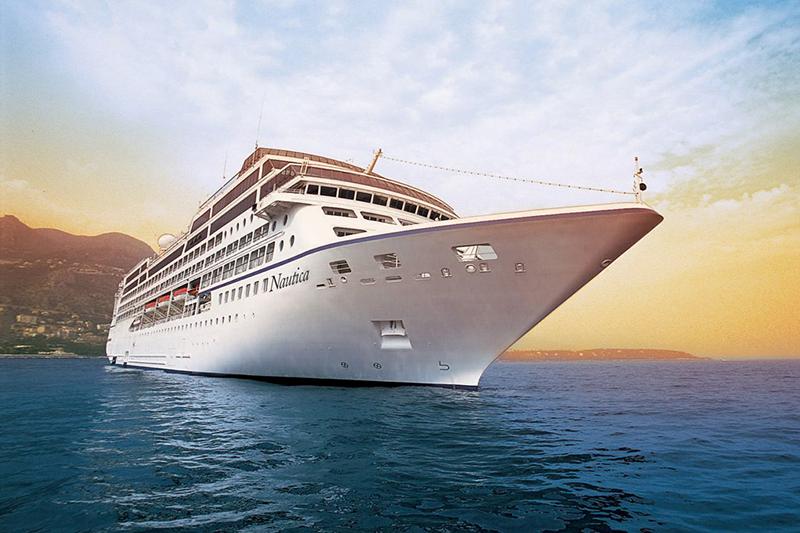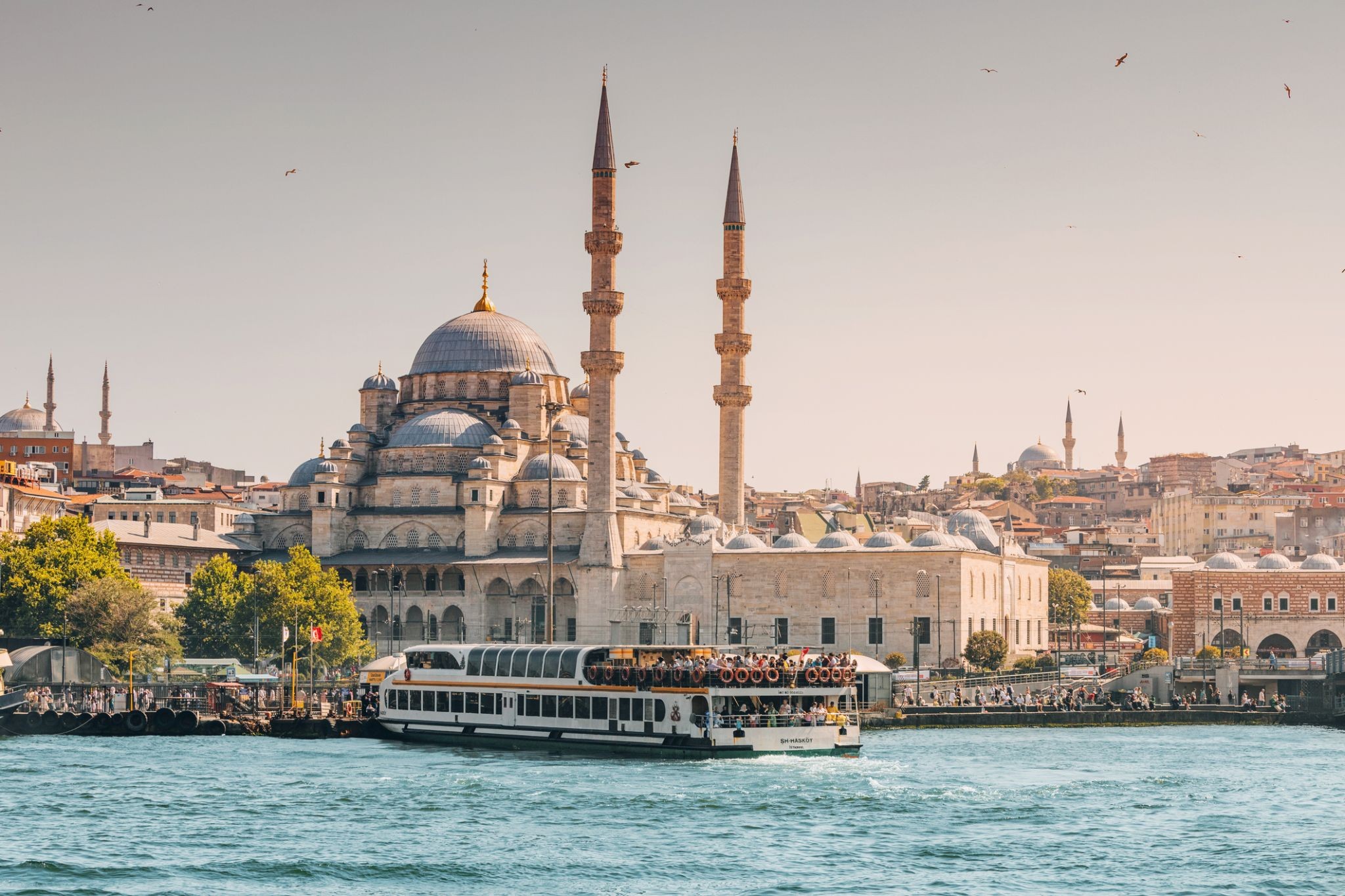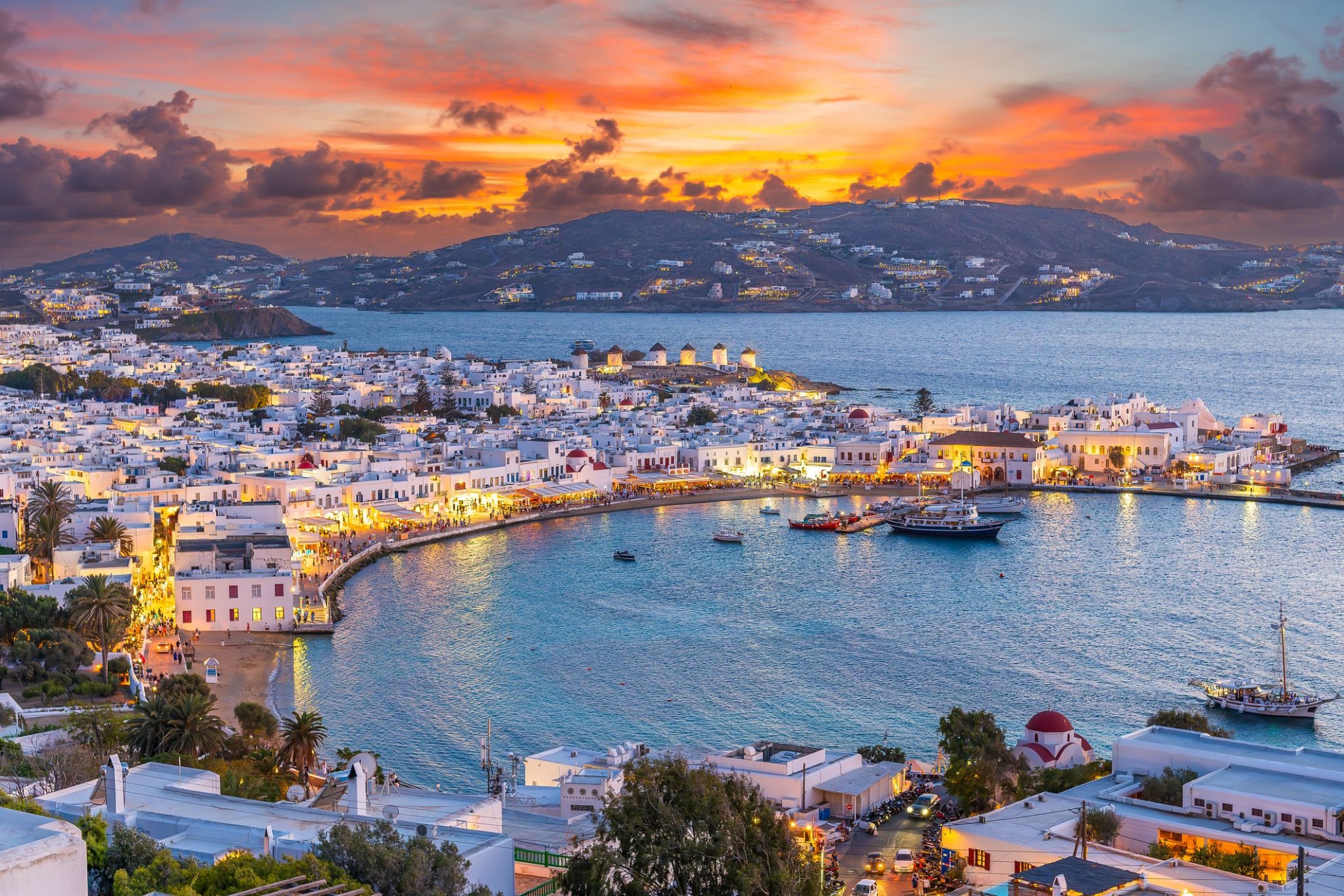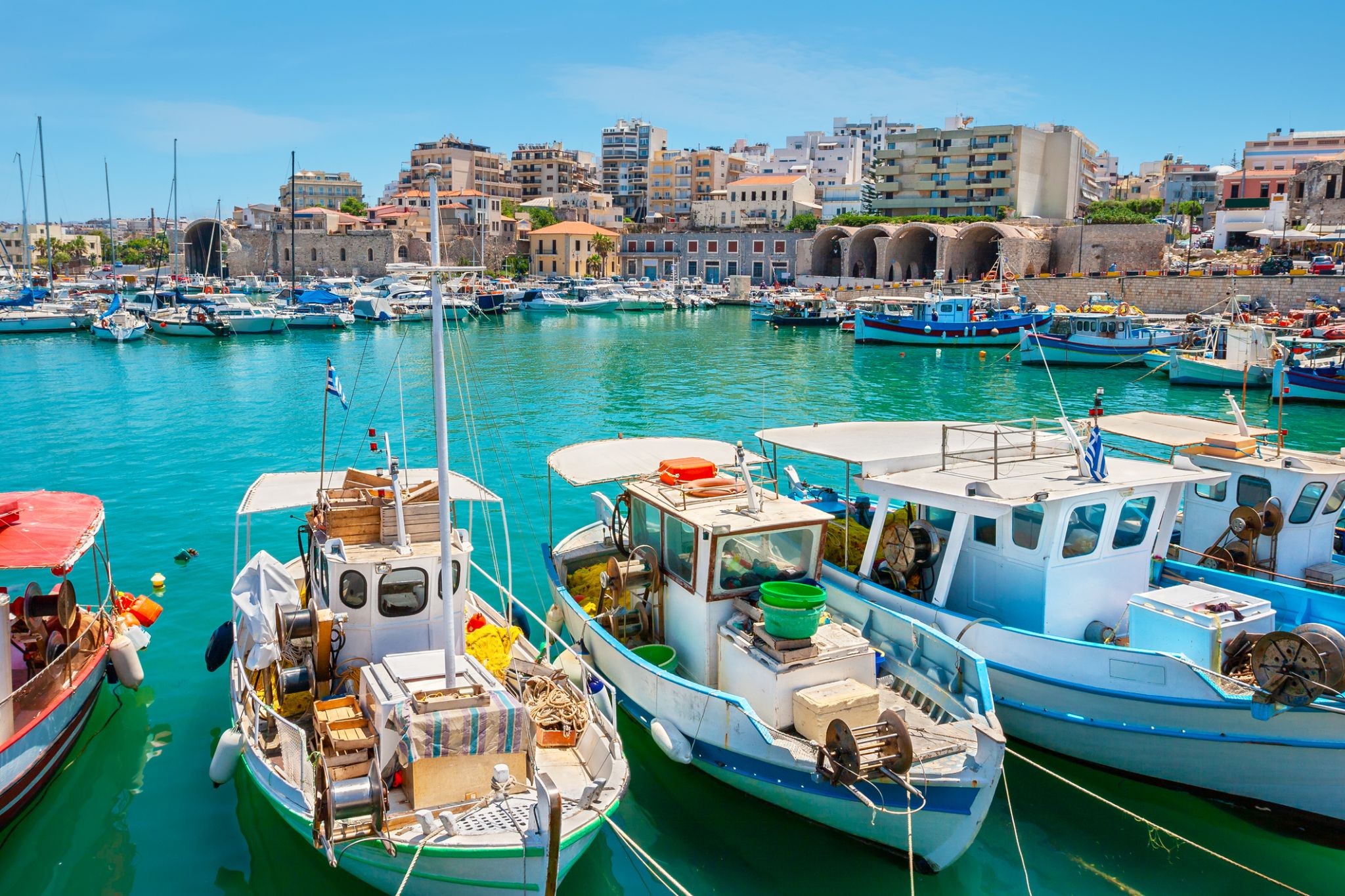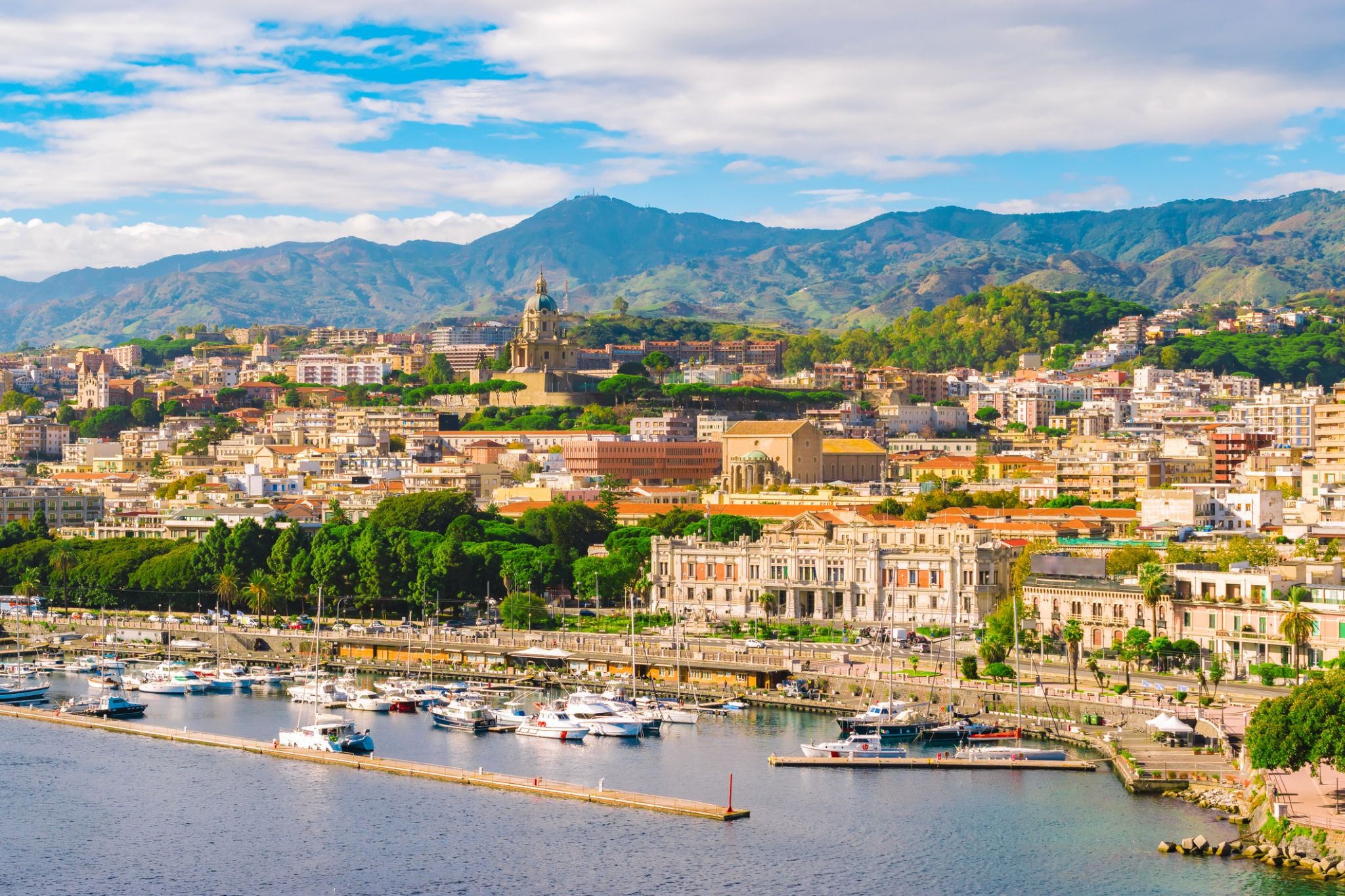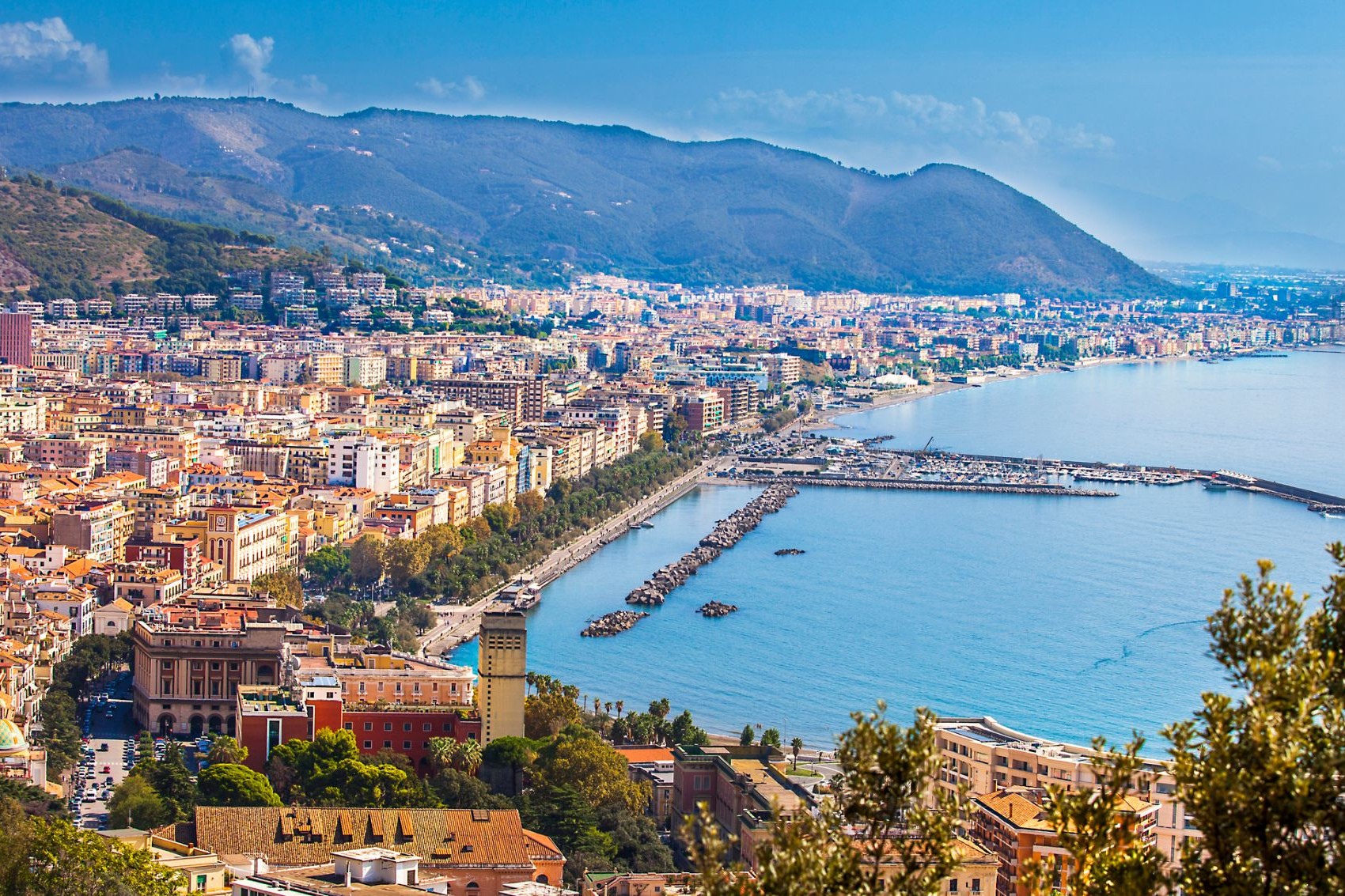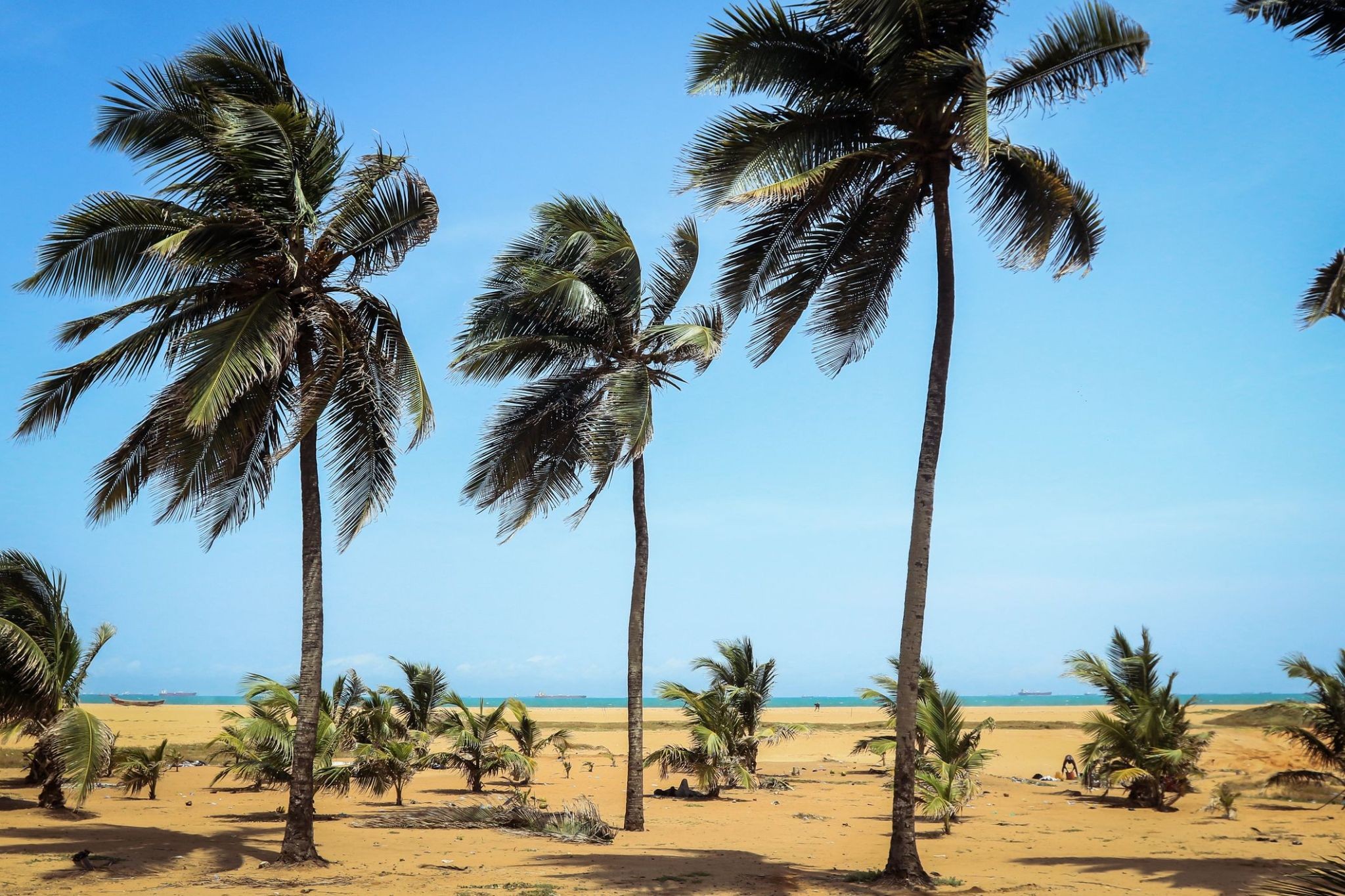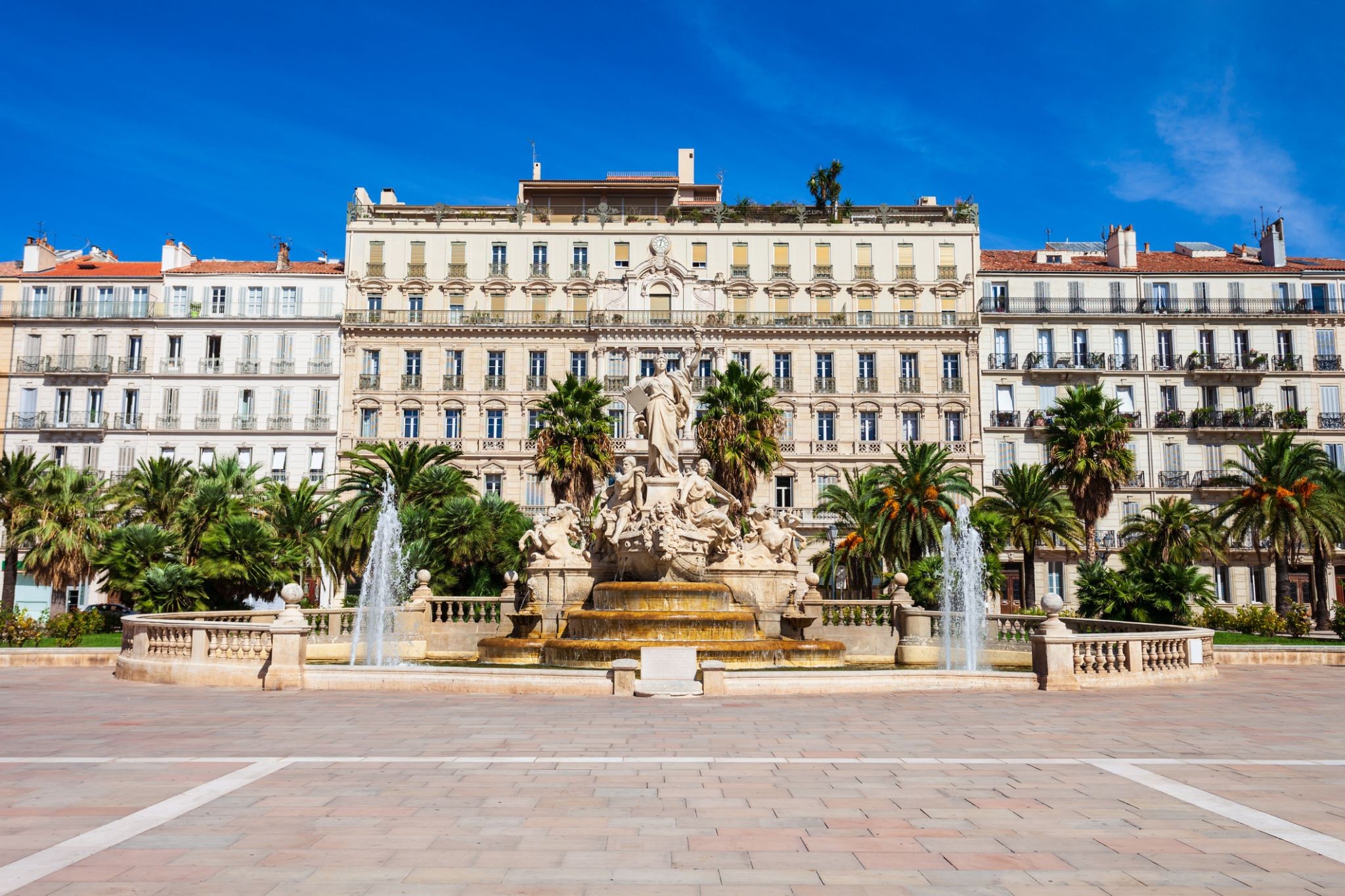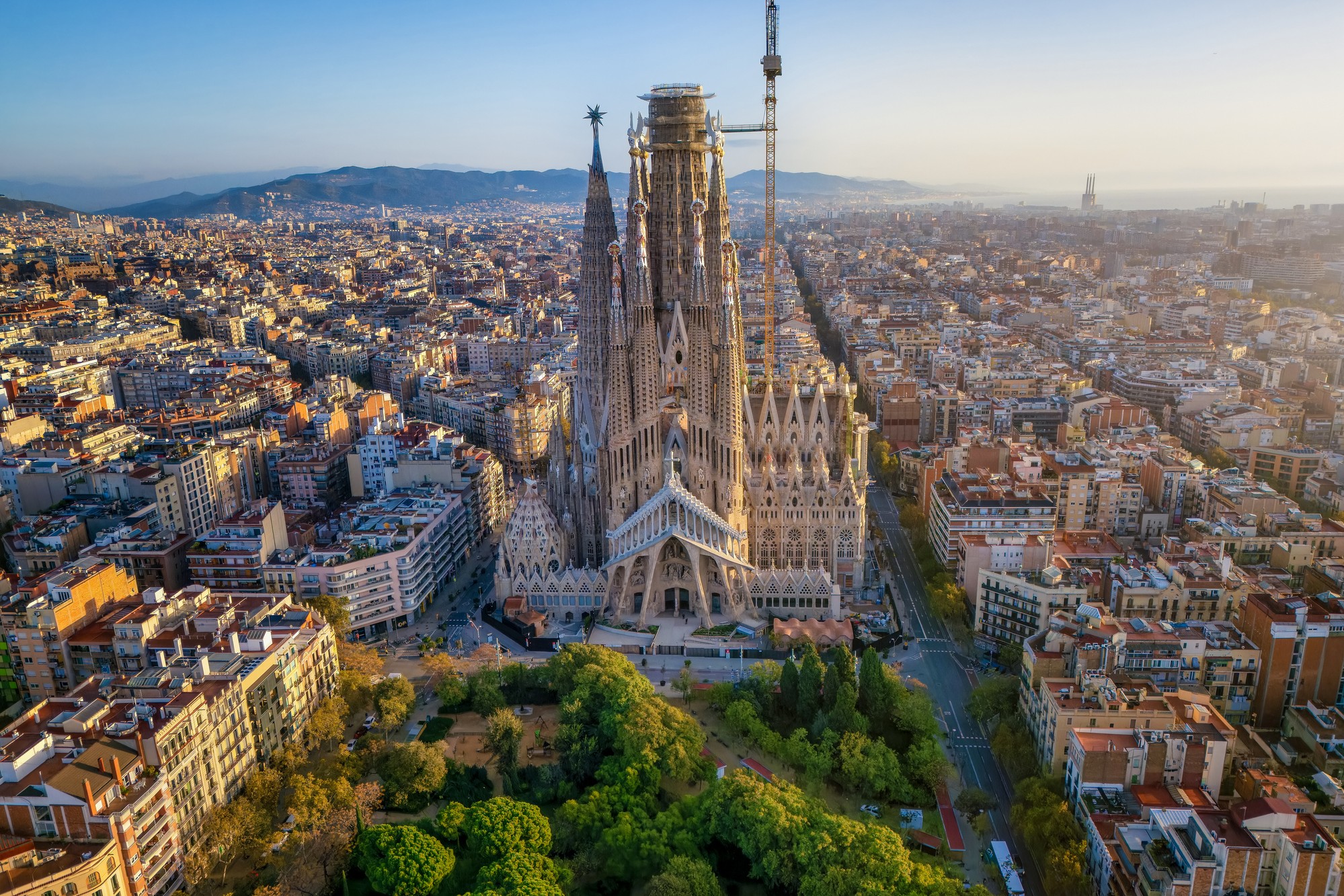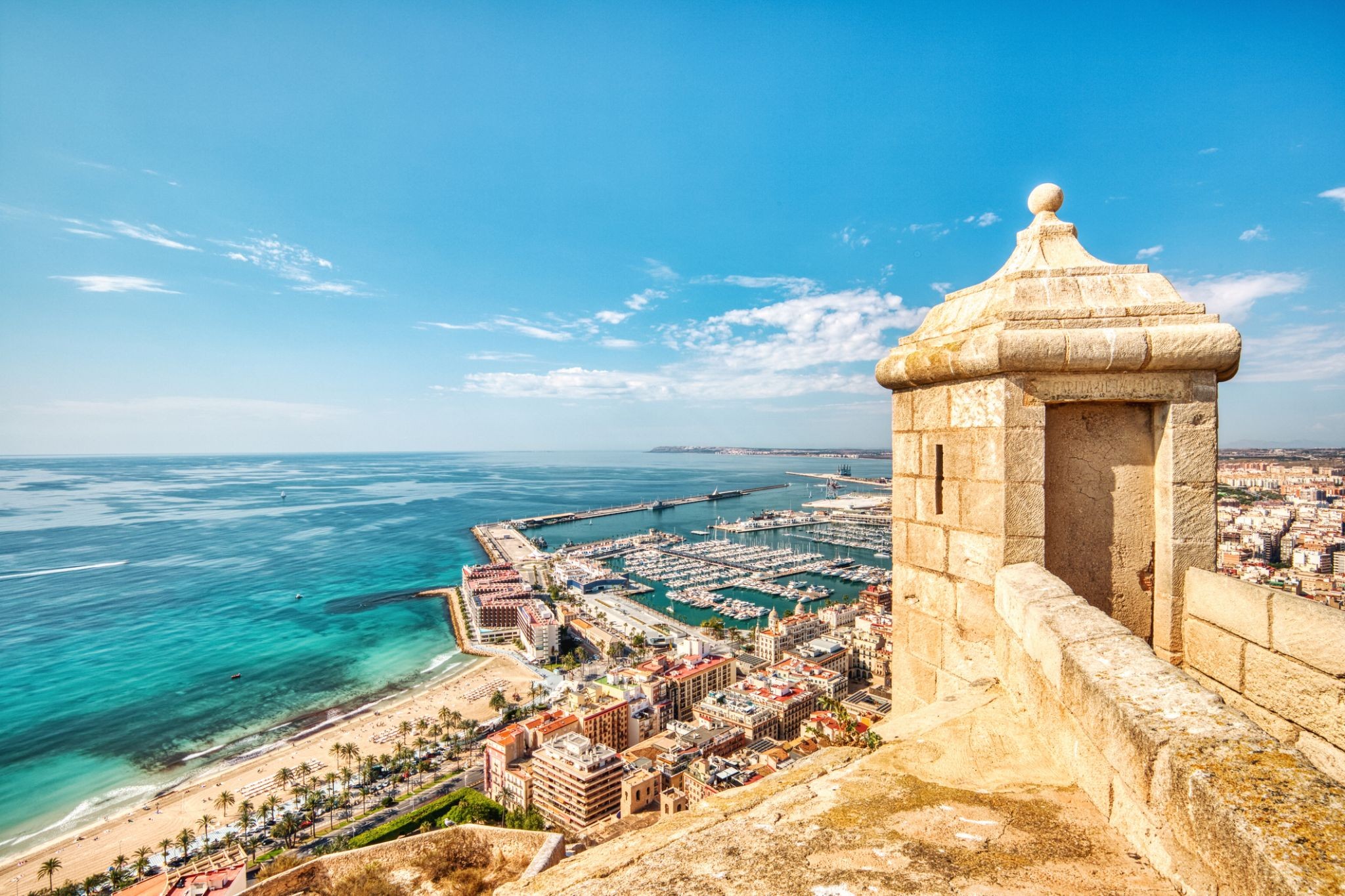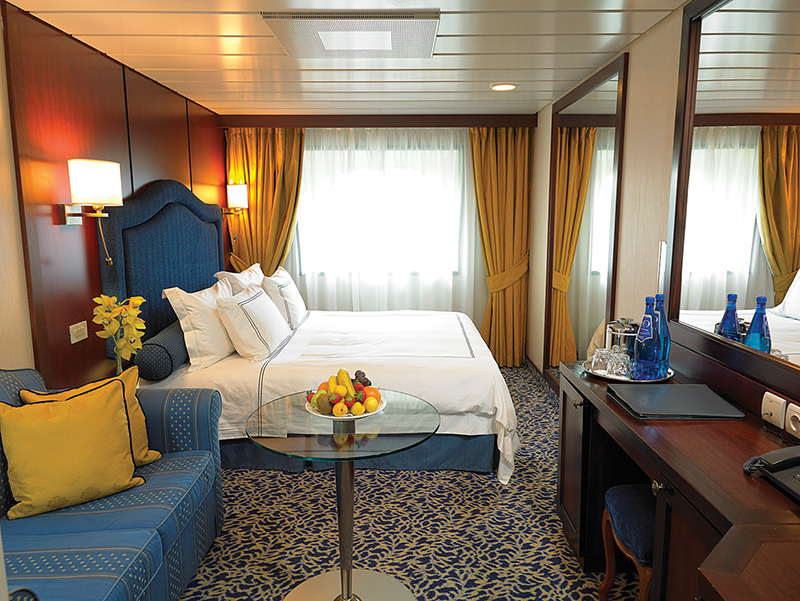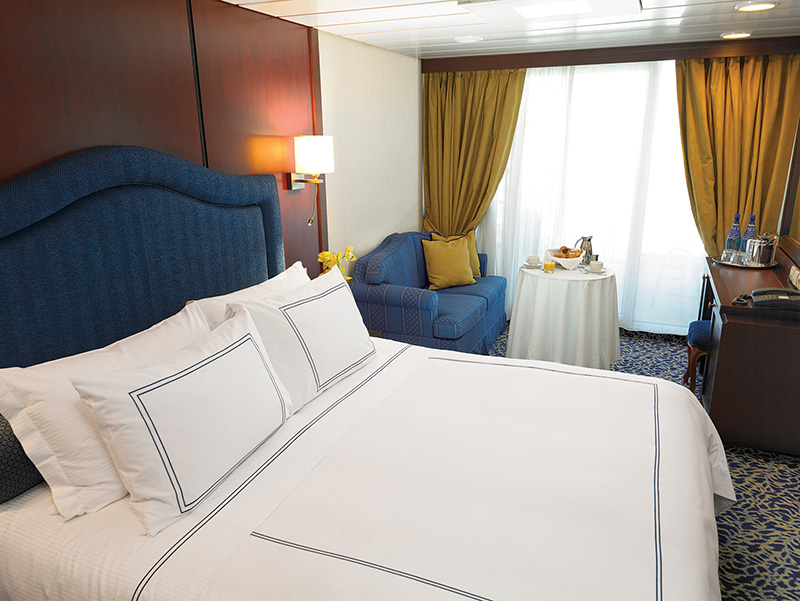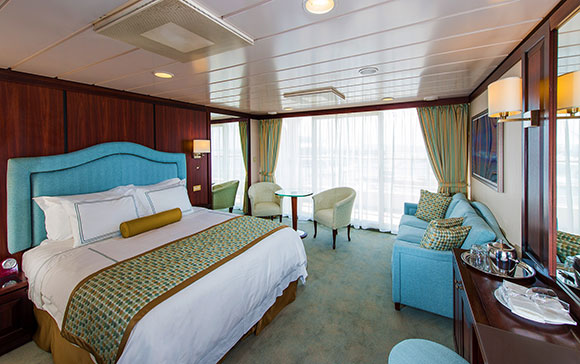
Cruise: 30,941,302
Aegean & atlantic stars
| Cruise Region : Black Sea, Europe |
| Company : Oceania Cruises |
| Ship : Nautica |
| Journey Start : Thu 20 Nov 2025 |
| Journey End : Wed 17 Dec 2025 |
| Count Nights : 27 nights |
Schedule
| Day | Date | Port | Arrival | Departure |
|---|---|---|---|---|
| 1 | 20.11 Thu | Istanbul / Turkey | 19:00 | |
| 2 | 21.11 Fri | o.BOZJAADDA / Turkey | 08:00 | 18:00 |
| 3 | 22.11 Sat | Selcuk / Turkey | 07:00 | 17:00 |
| 4 | 23.11 Sun | Mykonos / Greece | 07:00 | 17:00 |
| 5 | 24.11 Mon | Piraeus (Athens) / Greece | 05:00 | 19:00 |
| 6 | 25.11 Tue | Heraklion / Greece | 08:00 | 18:00 |
| 7 | 26.11 Wed | Day at sea / Sea | ||
| 8 | 27.11 Thu | Messina, o. Sicily / Italy | 07:00 | 17:00 |
| 9 | 28.11 Fri | Salerno / Italy | 07:00 | 17:00 |
| 10 | 29.11 Sat | Lome / Togo | 07:00 | 19:00 |
| 11 | 30.11 Sun | FLORENCE PISA TUSCANY | 07:00 | 19:00 |
| 12 | 1.12 Mon | Toulon / France | 09:00 | 16:00 |
| 13 | 2.12 Tue | Barcelona / Spain | 07:00 | 17:00 |
| 14 | 3.12 Wed | Alicante / Spain | 09:00 | 17:00 |
| 15 | 4.12 Thu | Málaga / Spain | 10:00 | 21:00 |
| 16 | 5.12 Fri | Gibraltar / Great Britain | 07:00 | 17:00 |
| 17 | 6.12 Sat | Seville / Spain | 07:00 | 19:00 |
| 18 | 7.12 Sun | Day at sea / Sea | ||
| 19 | 8.12 Mon | Day at sea / Sea | ||
| 20 | 9.12 Tue | Ponta Delgada São Miguel Island Azores / Azores | 07:00 | 16:00 |
| 21 | 10.12 Wed | Day at sea / Sea | ||
| 22 | 11.12 Thu | Day at sea / Sea | ||
| 23 | 12.12 Fri | Day at sea / Sea | ||
| 24 | 13.12 Sat | Day at sea / Sea | ||
| 25 | 14.12 Sun | Day at sea / Sea | ||
| 26 | 15.12 Mon | Day at sea / Sea | ||
| 27 | 16.12 Tue | Nassau / Bahamas | 10:00 | 17:00 |
| 28 | 17.12 Wed | Miami / USA | 07:00 | 17:00 |
-
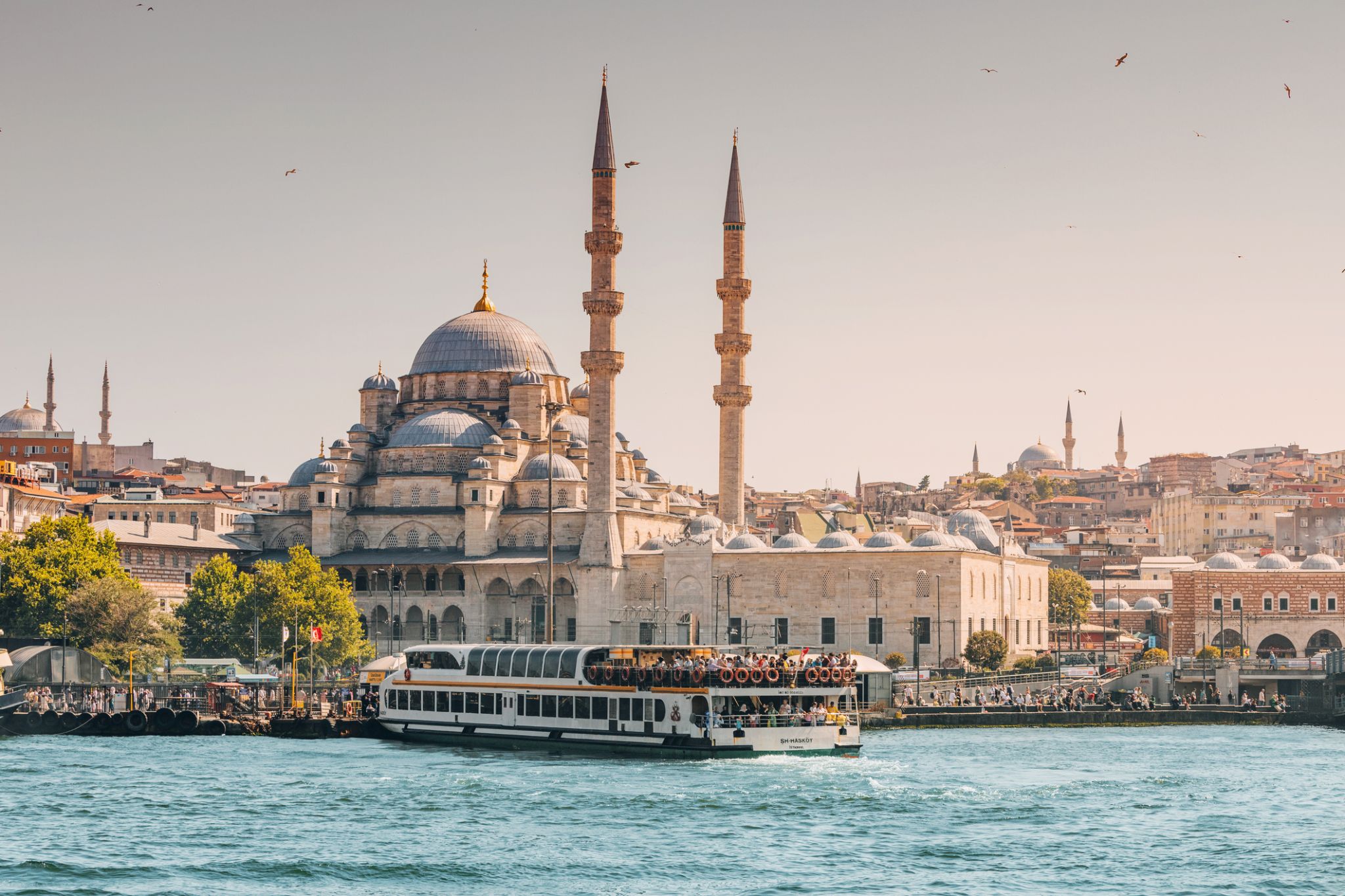 Day 1: 19:00
Day 1: 19:00Istanbul / Turkey
Стамбул — самый крупный город Турции, расположился на берегах залива Босфор. До 1930 года город имел название Константинополь и был столицей таких великих империй как: Римская, Византийская, Литинская и Османская. На территории города и в его окрестностях сохранились постройки древних цивилизаций, исторических памятников архитектуры и другие важные достопримечательности.
Сегодня Стамбул является важным культурным, торговым и промышленным центром страны. Туристы приезжают сюда не только чтобы посмотреть на храмы, дворцы, парковые ансамбли, музеи и крепости, но и для того чтобы скупится на известных турецких рынках и базарах, которые известны по всему миру. Здесь можно приобрести хорошие поделки известных брендов, пестрые кальяны, душистые специи, ювелирные изделия и предметы старины, а также всласть поторговаться.
-
 Day 2: 08:00-18:00
Day 2: 08:00-18:00o.BOZJAADDA / Turkey
-
 Day 3: 07:00-17:00
Day 3: 07:00-17:00Selcuk / Turkey
-
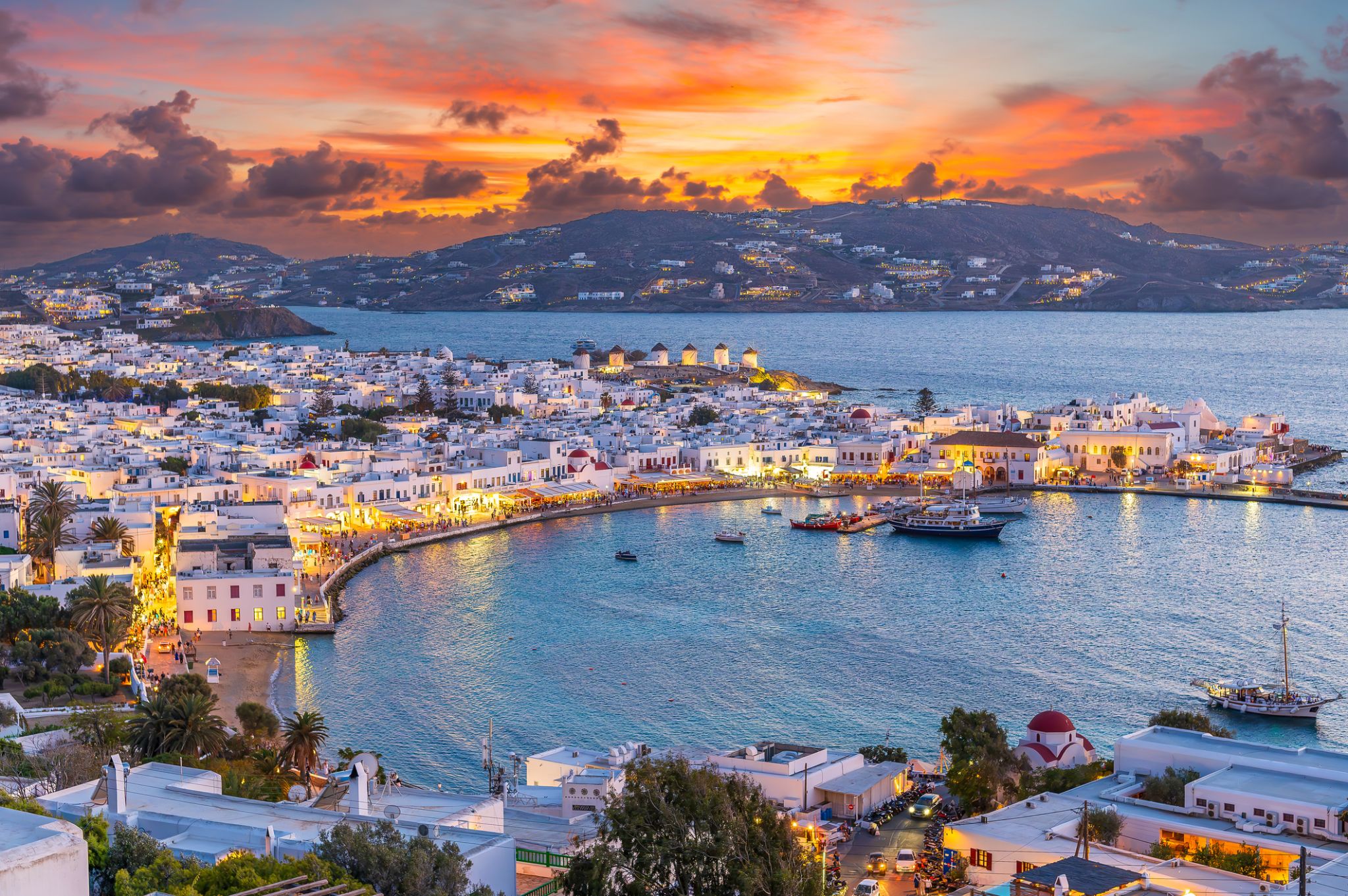 Day 4: 07:00-17:00
Day 4: 07:00-17:00Mykonos / Greece
Mykonos is a Greek island, part of the Cyclades, lying between Tinos, Syros, Paros and Naxos. The island spans an area of 85.5 square kilometres (33.0 sq mi) and rises to an elevation of 341 metres (1,119 feet) at its highest point. There are 10,134 inhabitants (2011 census), most of whom live in the largest town, Mykonos, which lies on the west coast. The town is also known as Chora (i.e. the Town in Greek, following the common practice in Greece when the name of the island itself is the same as the name of the principal town).
-
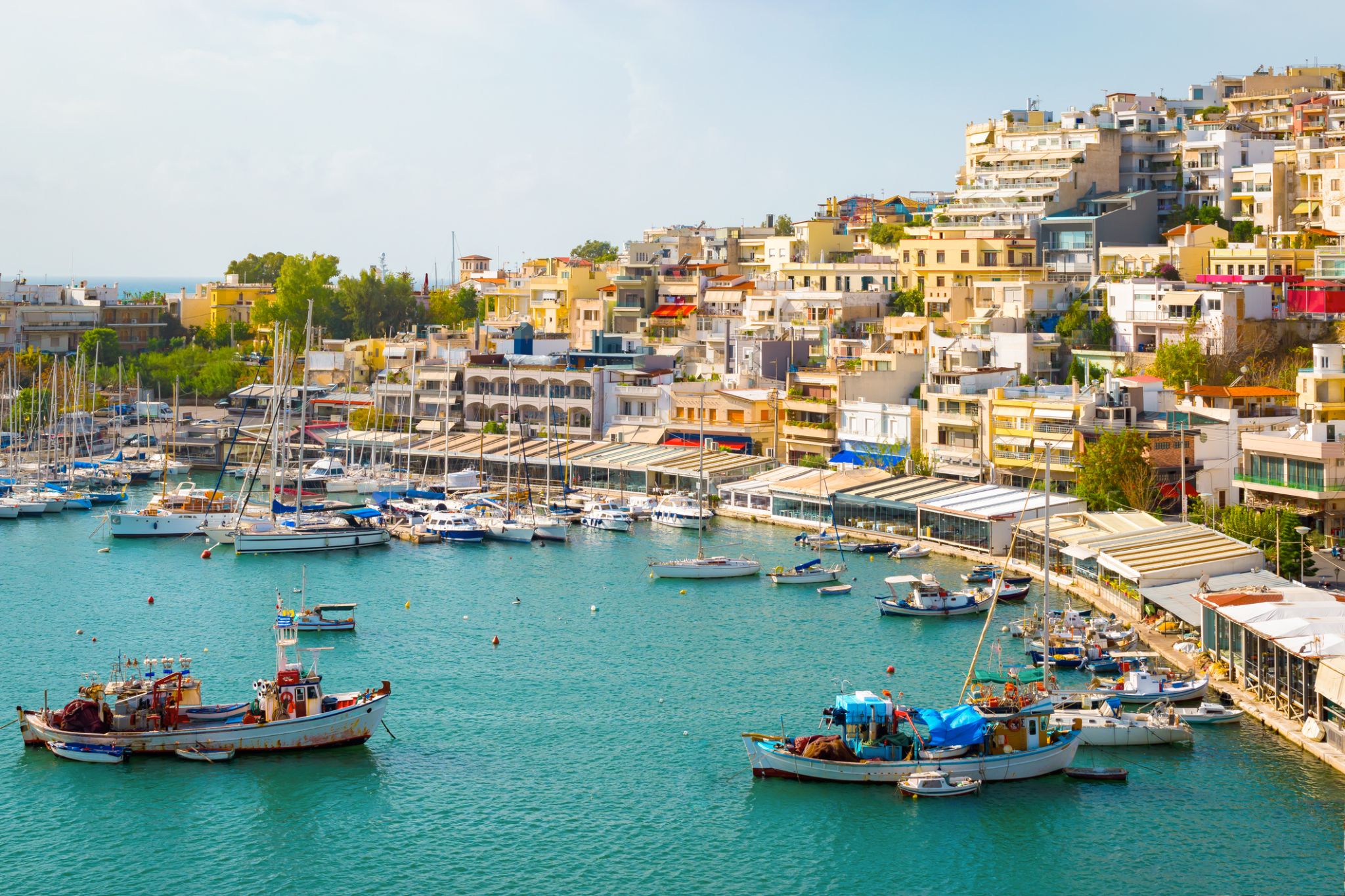 Day 5: 05:00-19:00
Day 5: 05:00-19:00Piraeus (Athens) / Greece
Piraeus is the gateway to Athens , which, in turn, is rightfully considered the center of the centers of the whole world, with the main attraction - the acropolis. Piraeus is an old port city serving the port of Athens, the largest port in Greece to date. Piraeus is part of the great Athens, which boasts an abundance of attractions, including unique monuments of national fine art. More than two hundred museums and galleries, including the University History Museum, the Ceramics Archaeological Museum and many others, will hospitably welcome you within their walls and familiarize themselves with the culture of this area.
-
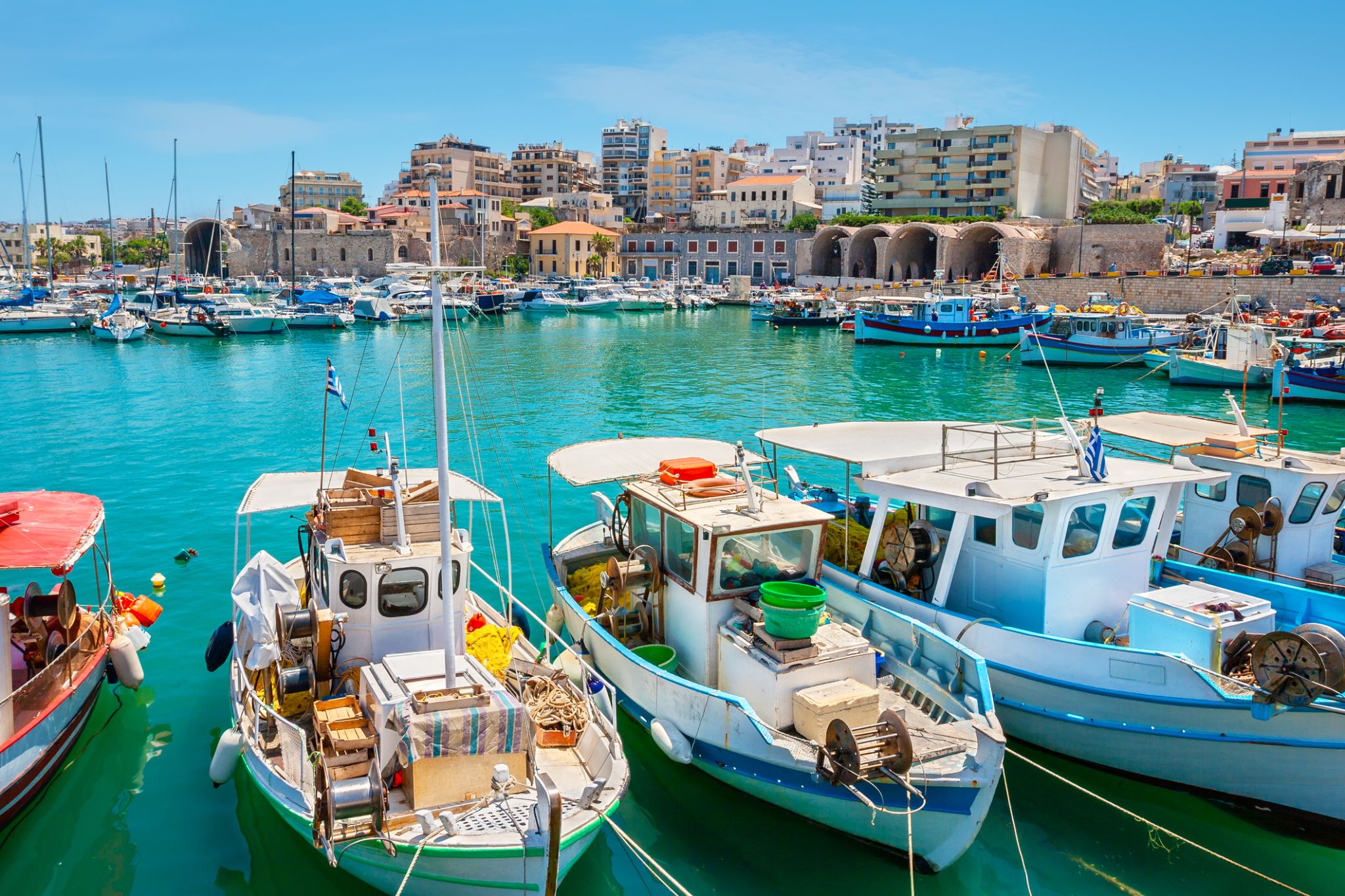 Day 6: 08:00-18:00
Day 6: 08:00-18:00Heraklion / Greece
Heraklion or Heraclion is the largest city and the administrative capital of the island of Crete. It is the fourth largest city in Greece. According to the results of the 2011 census, the population of the city proper was 166,209 inhabitants, the municipality's was 173,993 while the Heraklion urban area has a population of 225,574 and it extends over an area of 684.3 km2 (264.2 sq mi).
Heraklion is the capital of Heraklion regional unit.
The Bronze Age palace of Knossos, also known as the Palace of Minos, is located nearby.
-
 Day 7:
Day 7:Day at sea / Sea
-
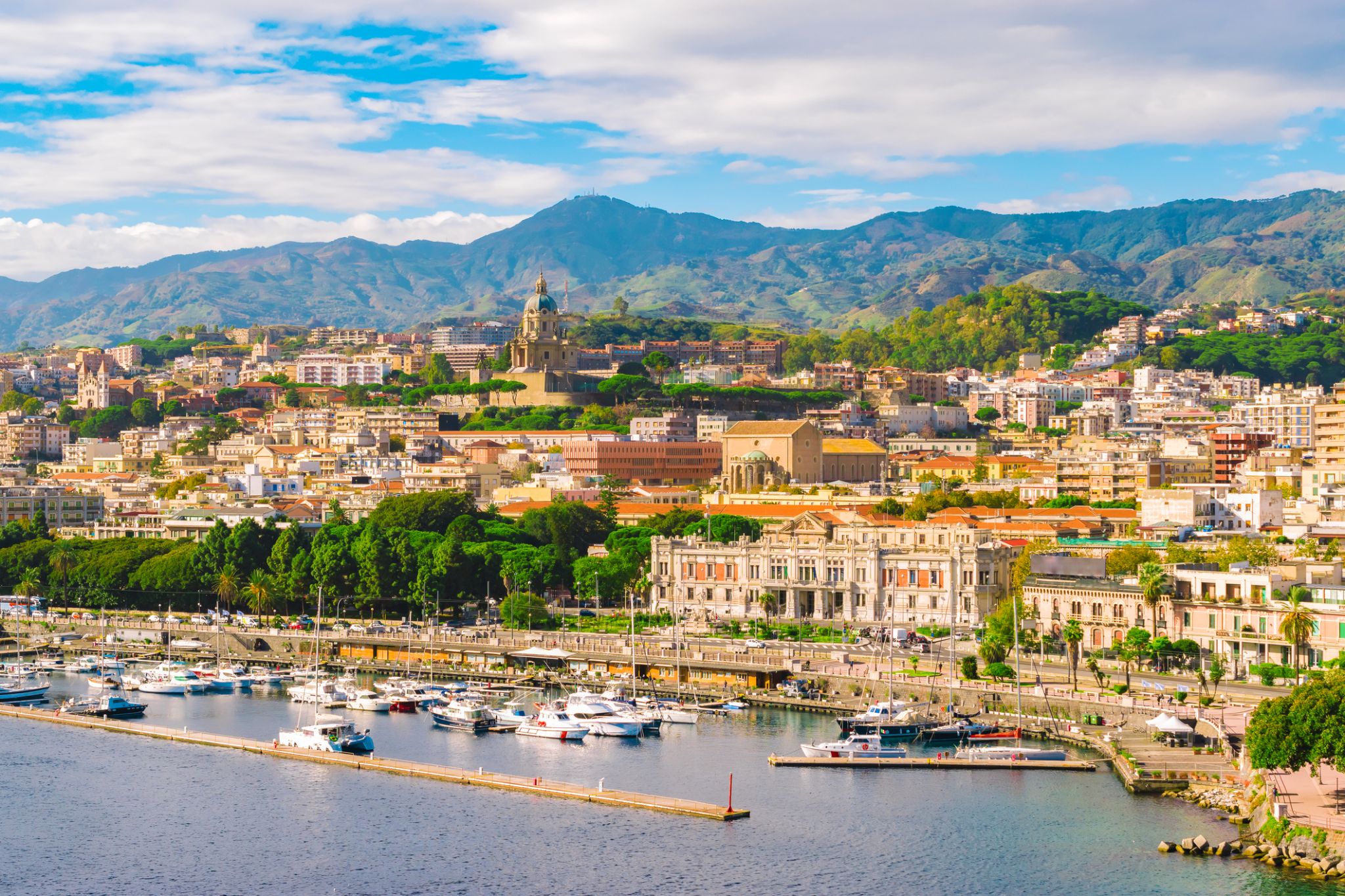 Day 8: 07:00-17:00
Day 8: 07:00-17:00Messina, o. Sicily / Italy
-
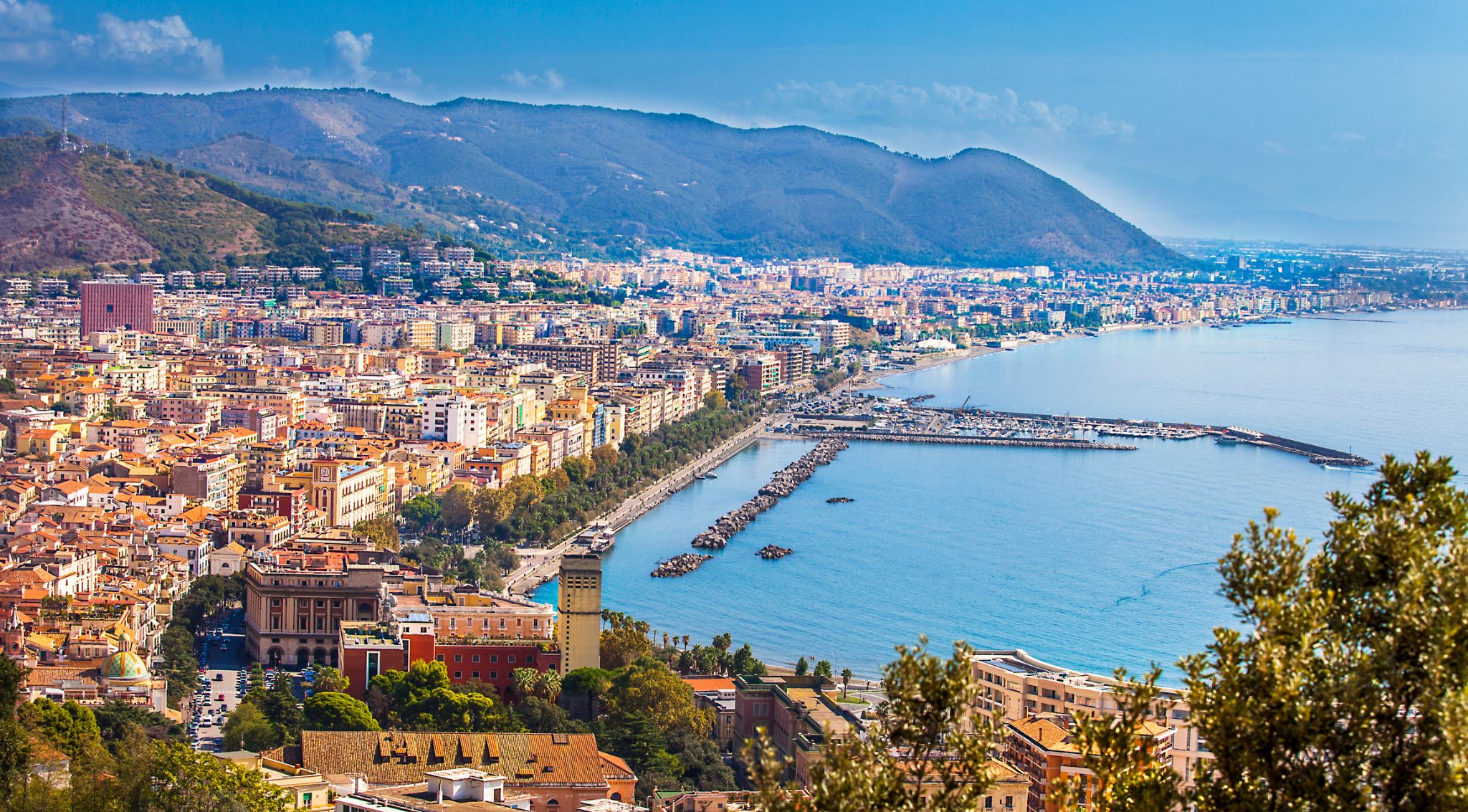 Day 9: 07:00-17:00
Day 9: 07:00-17:00Salerno / Italy
Salerno is one of the most popular seaside cities in Italy, intended for recreation at sea. The climate here is warm and mild, which is typical for all cities of the Neapolitan Riviera. Tourism in Salerno is at a high level, as the city is a rich historical and cultural center. Salerno contains many attractions interesting for lovers of history, art and culture.
-
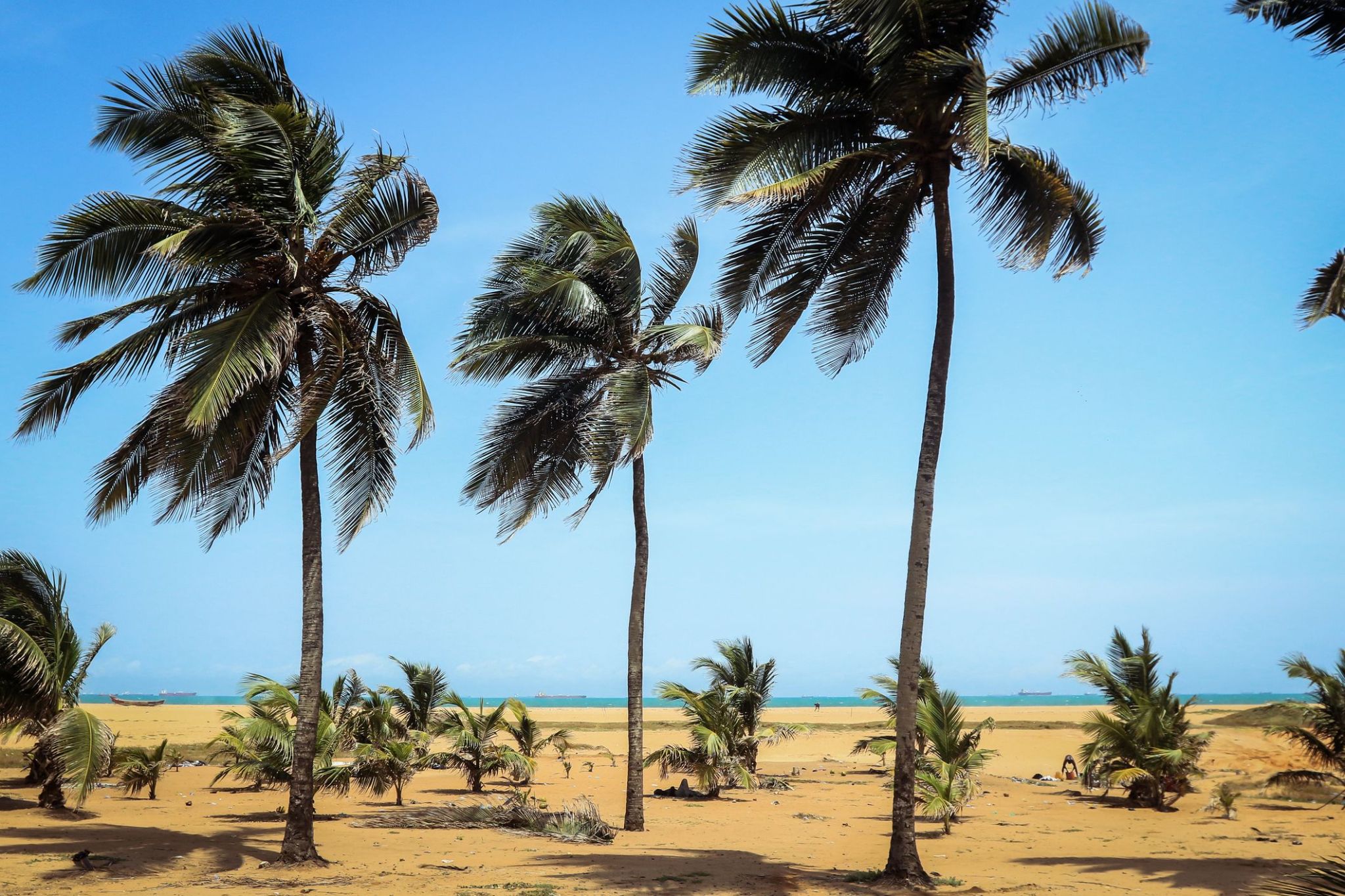 Day 10: 07:00-19:00
Day 10: 07:00-19:00Lome / Togo
Lomé is the capital and largest city of Togo. It has an urban population of 837,437[1] while there were 1,570,283 permanent residents in its metropolitan area as of the 2011 census. Located on the Gulf of Guinea, Lomé is the country's administrative and industrial center, which includes an oil refinery, and its chief port, where it exports coffee, cocoa, copra, and palm kernels.
-
 Day 11: 07:00-19:00
Day 11: 07:00-19:00FLORENCE PISA TUSCANY
-
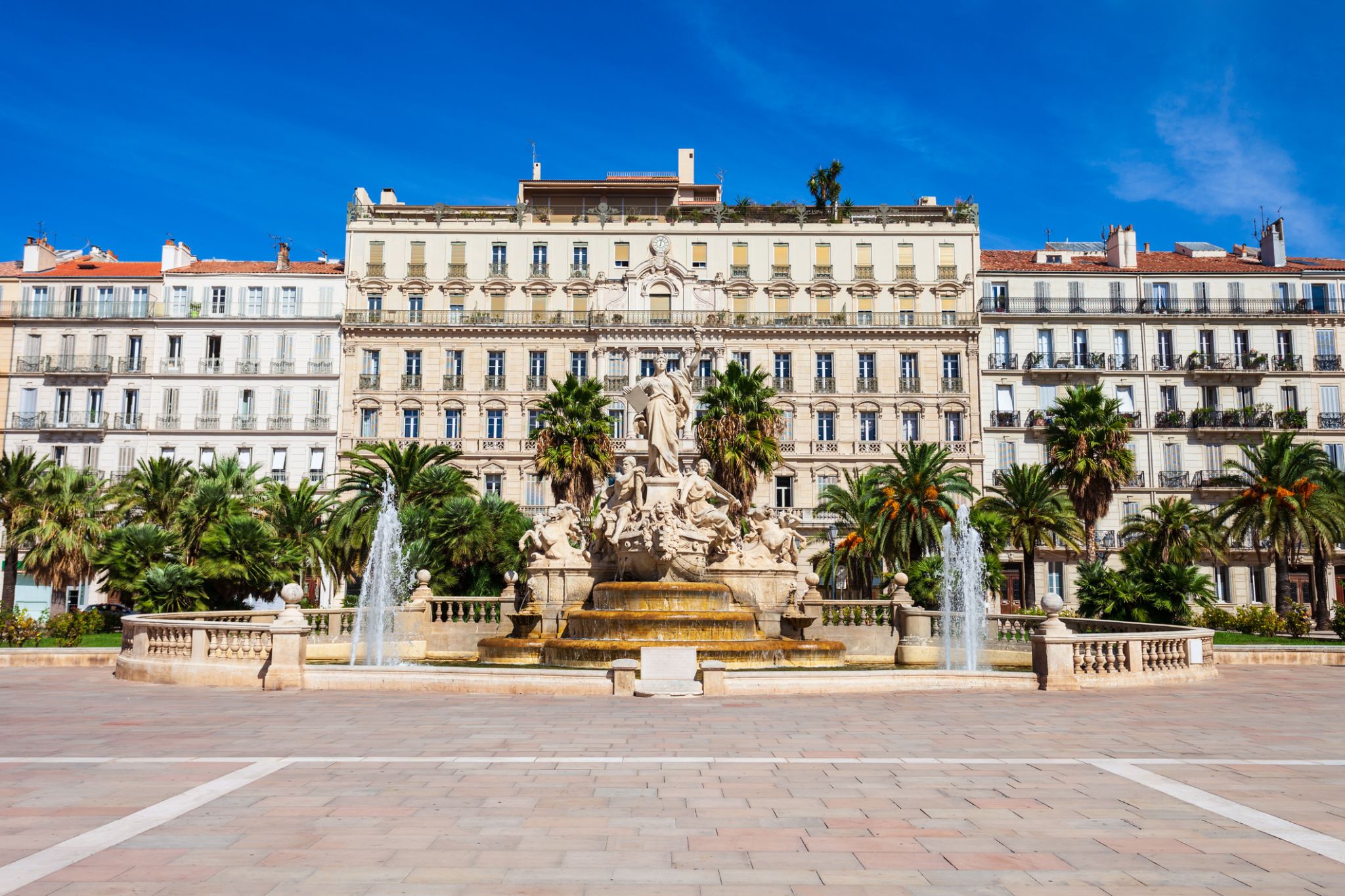 Day 12: 09:00-16:00
Day 12: 09:00-16:00Toulon / France
Toulon is a city in southern France and a large military harbour on the Mediterranean coast, with a major French naval base. Located in the Provence-Alpes-Côte d'Azur region, Toulon is the capital of the Var department.
The Commune of Toulon has a population of 165,514 people (2009), making it the fifteenth-largest city in France. It is the centre of an urban area with 559,421 inhabitants (2008), the ninth largest in France. Toulon is the fourth-largest French city on the Mediterranean coast after Marseille, Nice and Montpellier.
Toulon is an important centre for naval construction, fishing, wine making, and the manufacture of aeronautical equipment, armaments, maps, paper, tobacco, printing, shoes, and electronic equipment.
The military port of Toulon is the major naval centre on France's Mediterranean coast, home of the French aircraft carrier Charles de Gaulle and her battle group. The French Mediterranean Fleet is based in Toulon.
-
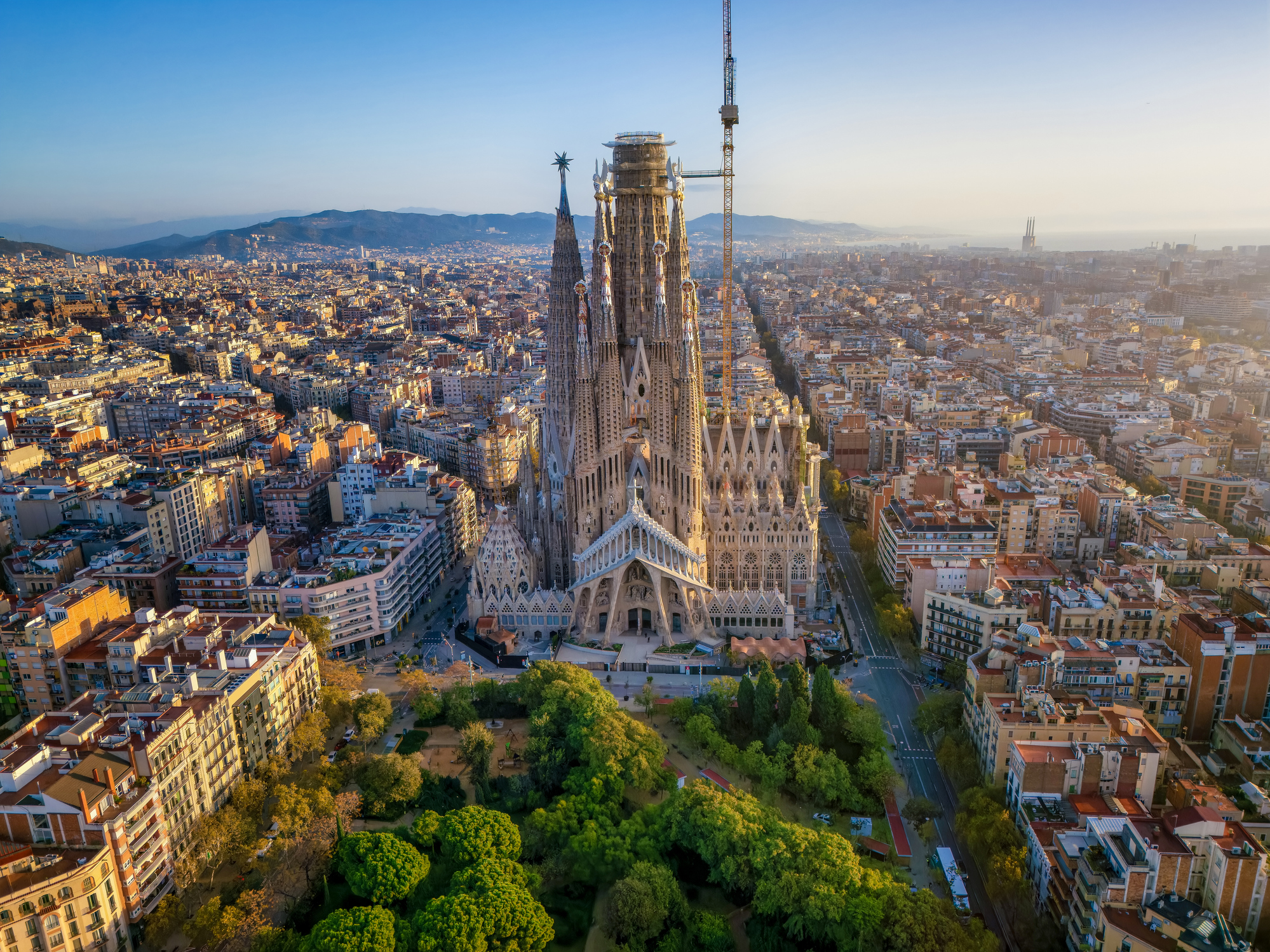 Day 13: 07:00-17:00
Day 13: 07:00-17:00Barcelona / Spain
Barcelona is a city in Spain. It is the capital and largest city of Catalonia, as well as the second most populous municipality of Spain. With a population of 1.6 million within city limits, its urban area extends to numerous neighbouring municipalities within the Province of Barcelona and is home to around 4.8 million people, making it the sixth most populous urban area in the European Union after Paris, London, Madrid, the Ruhr area and Milan. It is one of the largest metropolises on the Mediterranean Sea, located on the coast between the mouths of the rivers Llobregat and Besòs, and bounded to the west by the Serra de Collserola mountain range, the tallest peak of which is 512 metres (1,680 feet) high.
Founded as a Roman city, in the Middle Ages Barcelona became the capital of the County of Barcelona. After merging with the Kingdom of Aragon, Barcelona continued to be an important city in the Crown of Aragon as an economic and administrative centre of this Crown and the capital of the Principality of Catalonia. Barcelona has a rich cultural heritage and is today an important cultural centre and a major tourist destination. Particularly renowned are the architectural works of Antoni Gaudí and Lluís Domènech i Montaner, which have been designated UNESCO World Heritage Sites. The headquarters of the Union for the Mediterranean are located in Barcelona. The city is known for hosting the 1992 Summer Olympics as well as world-class conferences and expositions and also many international sport tournaments.
Barcelona is one of the world's leading tourist, economic, trade fair and cultural centres, and its influence in commerce, education, entertainment, media, fashion, science, and the arts all contribute to its status as one of the world's major global cities. It is a major cultural and economic centre in southwestern Europe, 24th in the world (before Zürich, after Frankfurt) and a financial centre. In 2008 it was the fourth most economically powerful city by GDP in the European Union and 35th in the world with GDP amounting to €177 billion. In 2012 Barcelona had a GDP of $170 billion; and it was leading Spain in employment rate in that moment.
In 2009 the city was ranked Europe's third and one of the world's most successful as a city brand. In the same year the city was ranked Europe's fourth best city for business and fastest improving European city, with growth improved by 17% per year, and the city has been experiencing strong and renewed growth for the past three years. Since 2011 Barcelona has been a leading smart city in Europe. Barcelona is a transport hub, with the Port of Barcelona being one of Europe's principal seaports and busiest European passenger port, an international airport, Barcelona–El Prat Airport, which handles over 50 million passengers per year, an extensive motorway network, and a high-speed rail line with a link to France and the rest of Europe.
-
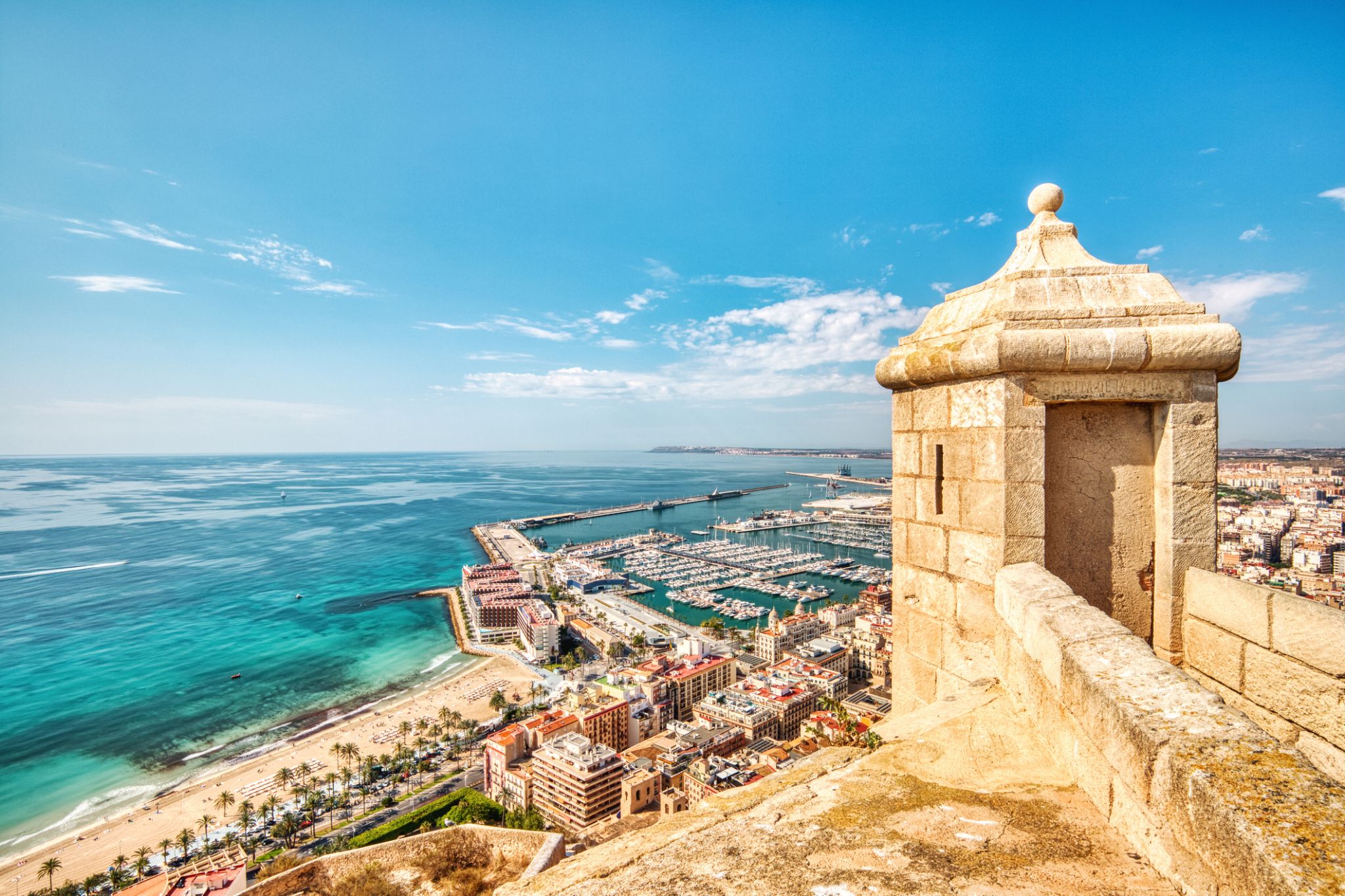 Day 14: 09:00-17:00
Day 14: 09:00-17:00Alicante / Spain
Alicante, or Alacant , both the Spanish and Valencian being official names, is a city and port in Spain on the Costa Blanca, the capital of the province of Alicante and of the comarca of Alacantí, in the south of the Valencian Community. It is also a historic Mediterranean port. The population of the city of Alicante proper was 330,525, estimated as of 2016, ranking as the second-largest Valencian city. Including nearby municipalities, the Alicante conurbation had 452,462 residents. The population of the metropolitan area (including Elche and satellite towns) was 757,085 as of 2014 estimates, ranking as the eighth-largest metropolitan area of Spain.
-
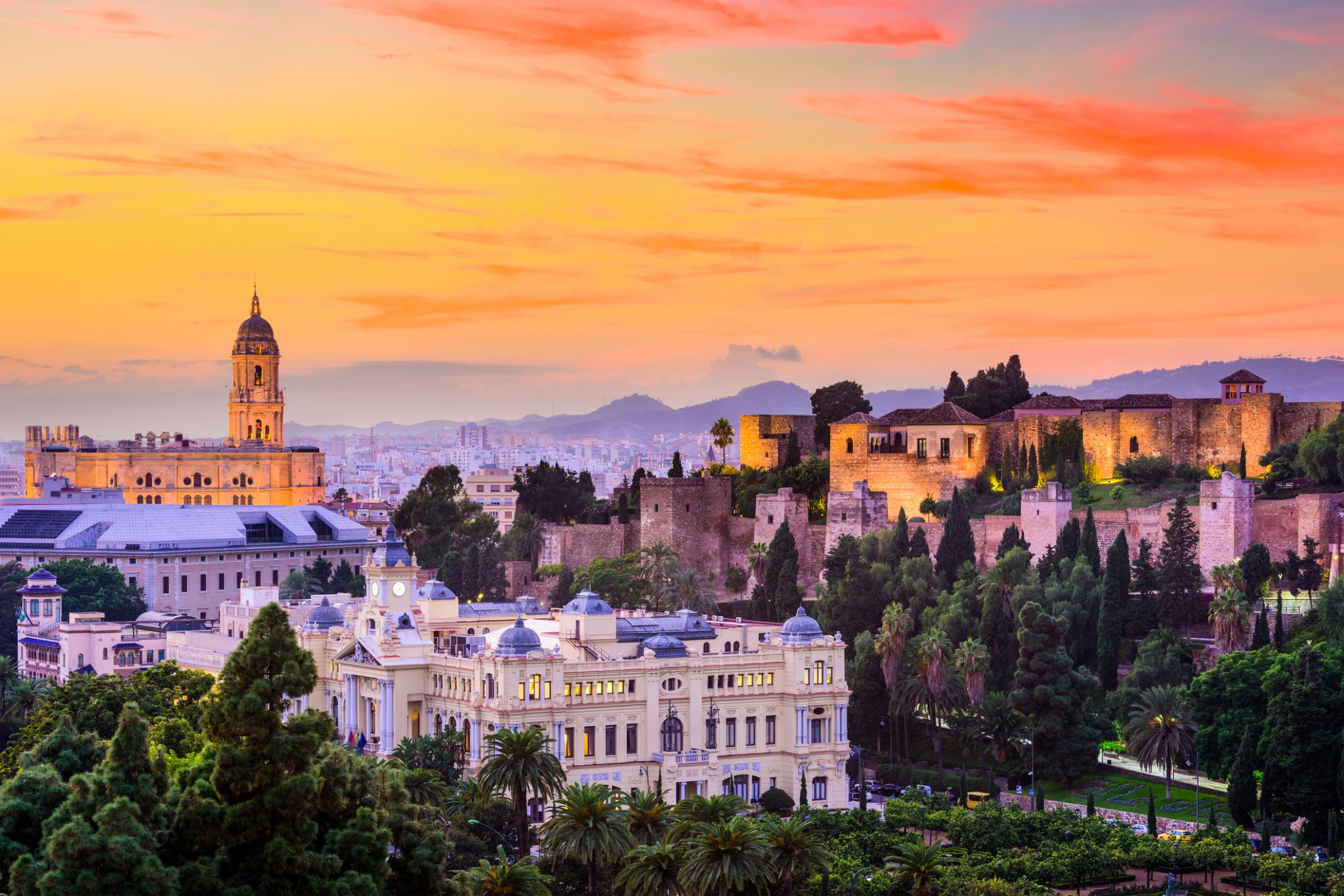 Day 15: 10:00-21:00
Day 15: 10:00-21:00Málaga / Spain
Málaga is a municipality, capital of the Province of Málaga, in the Autonomous Community of Andalusia, Spain. With a population of 569,130 in 2015, it is the second-most populous city of Andalusia and the sixth-largest in Spain. The southernmost large city in Europe, it lies on the Costa del Sol (Coast of the Sun) of the Mediterranean, about 100 kilometres (62.14 miles) east of the Strait of Gibraltar and about 130 km (80.78 mi) north of Africa.
Málaga's history spans about 2,800 years, making it one of the oldest cities in the world. According to most scholars, it was founded about 770 BC by the Phoenicians as Malaka From the 6th century BC the city was under the hegemony of Ancient Carthage, and from 218 BC, it was ruled by the Roman Republic and then empire as Malaca (Latin). After the fall of the empire and the end of Visigothic rule, it was under Islamic rule as Mālaqah for 800 years, but in 1487, the Crown of Castille gained control after the Reconquista. The archaeological remains and monuments from the Phoenician, Roman, Arabic and Christian eras make the historic center of the city an "open museum", displaying its history of nearly 3,000 years.
This important cultural infrastructure and the artistic heritage have culminated in the nomination of Málaga as a candidate for the 2016 European Capital of Culture.
The painter and sculptor Pablo Picasso, Hebrew poet and Jewish philosopher Solomon Ibn Gabirol and the actor Antonio Banderas were born in Málaga. The magnum opus of Cuban composer Ernesto Lecuona, "Malagueña", is named after the music of this region of Spain.
The most important business sectors in Málaga are tourism, construction and technology services, but other sectors such as transportation and logistics are beginning to expand. The Andalusia Technology Park (PTA), located in Málaga, has enjoyed significant growth since its inauguration in 1992. Málaga is the main economic and financial centre of southern Spain, home of the region's largest bank, Unicaja, and the fourth-ranking city in economic activity in Spain behind Madrid, Barcelona and Valencia.
-
 Day 16: 07:00-17:00
Day 16: 07:00-17:00Gibraltar / Great Britain
Gibraltar is a British Overseas Territory located at the southern tip of the Iberian Peninsula. It has an area of 6.7 km2 (2.6 sq mi) and is bordered to the north by Spain. The landscape is dominated by the Rock of Gibraltar at the foot of which is a densely populated town area, home to over 30,000 people, primarily Gibraltarians. It shares a maritime border with Morocco.
In 1704, Anglo-Dutch forces captured Gibraltar from Spain during the War of the Spanish Succession on behalf of the Habsburg claim to the Spanish throne. The territory was ceded to Great Britain in perpetuity under the Treaty of Utrechtin 1713. During World War II it was an important base for the Royal Navy as it controlled the entrance and exit to the Mediterranean Sea, which is only 8 miles (13 km) wide at this naval choke point. It remains strategically important, with half the world's seaborne trade passing through the strait. Today Gibraltar's economy is based largely on tourism, online gambling, financial services and cargo ship refuelling.
The sovereignty of Gibraltar is a point of contention in Anglo-Spanish relations because Spain asserts a claim to the territory. Gibraltarians rejected proposals for Spanish sovereignty in a 1967 referendum and, in a 2002 referendum, the idea of shared sovereignty was also rejected.
-
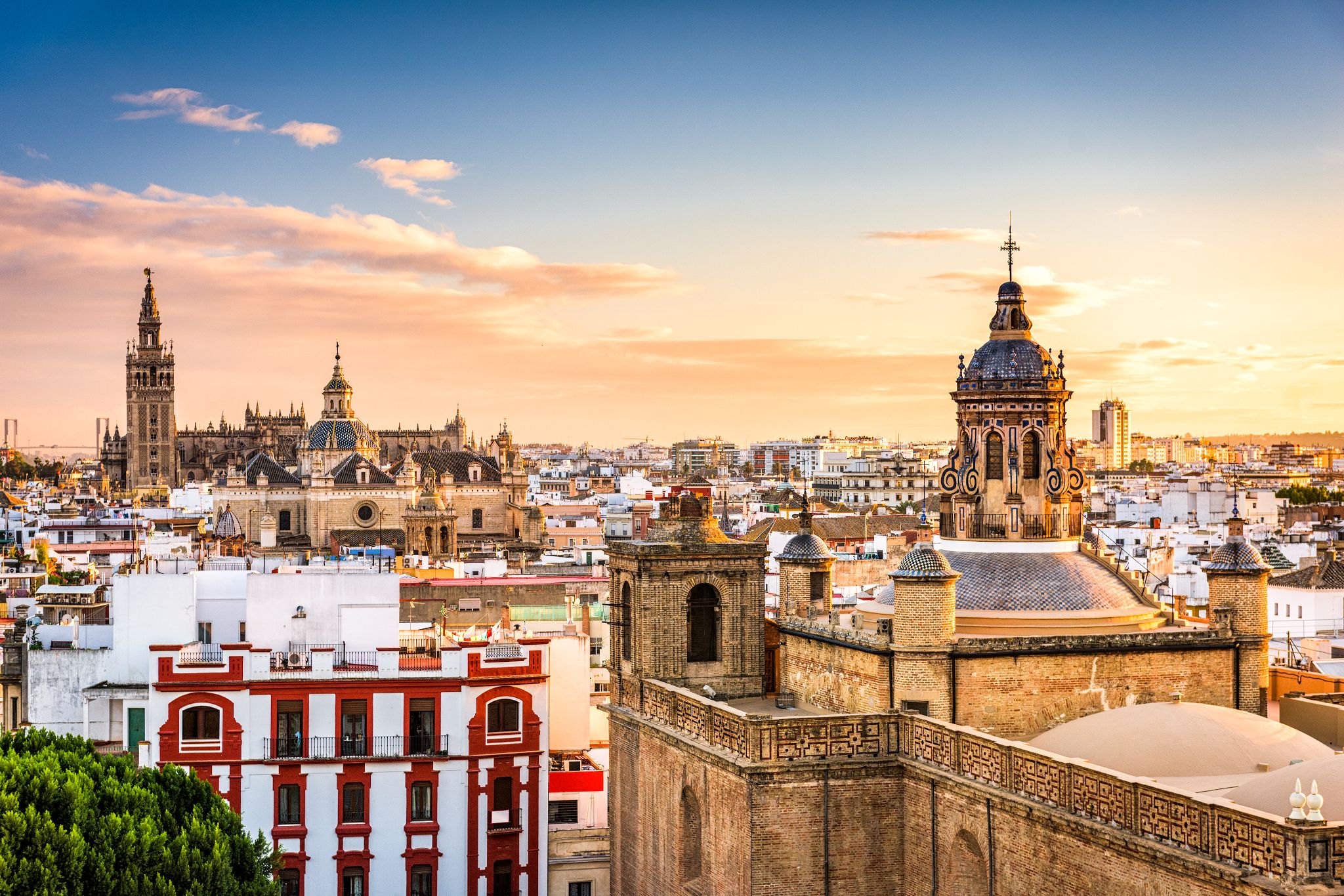 Day 17: 07:00-19:00
Day 17: 07:00-19:00Seville / Spain
Seville is the capital and largest city of the autonomous community of Andalusia and the province of Seville, Spain. It is situated on the plain of the river Guadalquivir. The inhabitants of the city are known as sevillanos (feminine form: sevillanas) or hispalenses, after the Roman name of the city, Hispalis. Seville has a municipal population of about 690,000 as of 2016, and a metropolitan population of about 1.5 million, making it the fourth-largest city in Spain and the 30th most populous municipality in the European Union. Its Old Town, with an area of 4 square kilometres (2 sq mi), contains three UNESCO World Heritage Sites: the Alcázar palace complex, the Cathedral and the General Archive of the Indies. The Seville harbour, located about 80 kilometres (50 miles) from the Atlantic Ocean, is the only river port in Spain. Seville is also the hottest major metropolitan area in the geographical Southwestern Europe, with summer average high temperatures of above 35 °C (95 °F).
Seville was founded as the Roman city of Hispalis. It later became known as Ishbiliyya after the Muslim conquest in 712. During the Muslim rule in Spain, Seville came under the jurisdiction of the Caliphate of Córdoba before becoming the independent Taifa of Seville; later it was ruled by the Muslim Almoravids and the Almohads until finally being incorporated into the Christian Kingdom of Castile under Ferdinand III in 1248. After the discovery of the Americas, Seville became one of the economic centres of the Spanish Empire as its port monopolised the trans-oceanic trade and the Casa de Contratación (House of Trade) wielded its power, opening a Golden Age of arts and literature. In 1519, Ferdinand Magellan departed from Seville for the first circumnavigation of the Earth. Coinciding with the Baroque period of European history, the 17th century in Seville represented the most brilliant flowering of the city's culture; then began a gradual economic and demographic decline as silting in the Guadalquivirforced the trade monopoly to relocate to the nearby port of Cádiz.
The 20th century in Seville saw the tribulations of the Spanish Civil War, decisive cultural milestones such as the Ibero-American Exposition of 1929 and Expo '92, and the city's election as the capital of the Autonomous Community of Andalusia.
-
 Day 18:
Day 18:Day at sea / Sea
-
 Day 19:
Day 19:Day at sea / Sea
-
 Day 20: 07:00-16:00
Day 20: 07:00-16:00Ponta Delgada São Miguel Island Azores / Azores
-
 Day 21:
Day 21:Day at sea / Sea
-
 Day 22:
Day 22:Day at sea / Sea
-
 Day 23:
Day 23:Day at sea / Sea
-
 Day 24:
Day 24:Day at sea / Sea
-
 Day 25:
Day 25:Day at sea / Sea
-
 Day 26:
Day 26:Day at sea / Sea
-
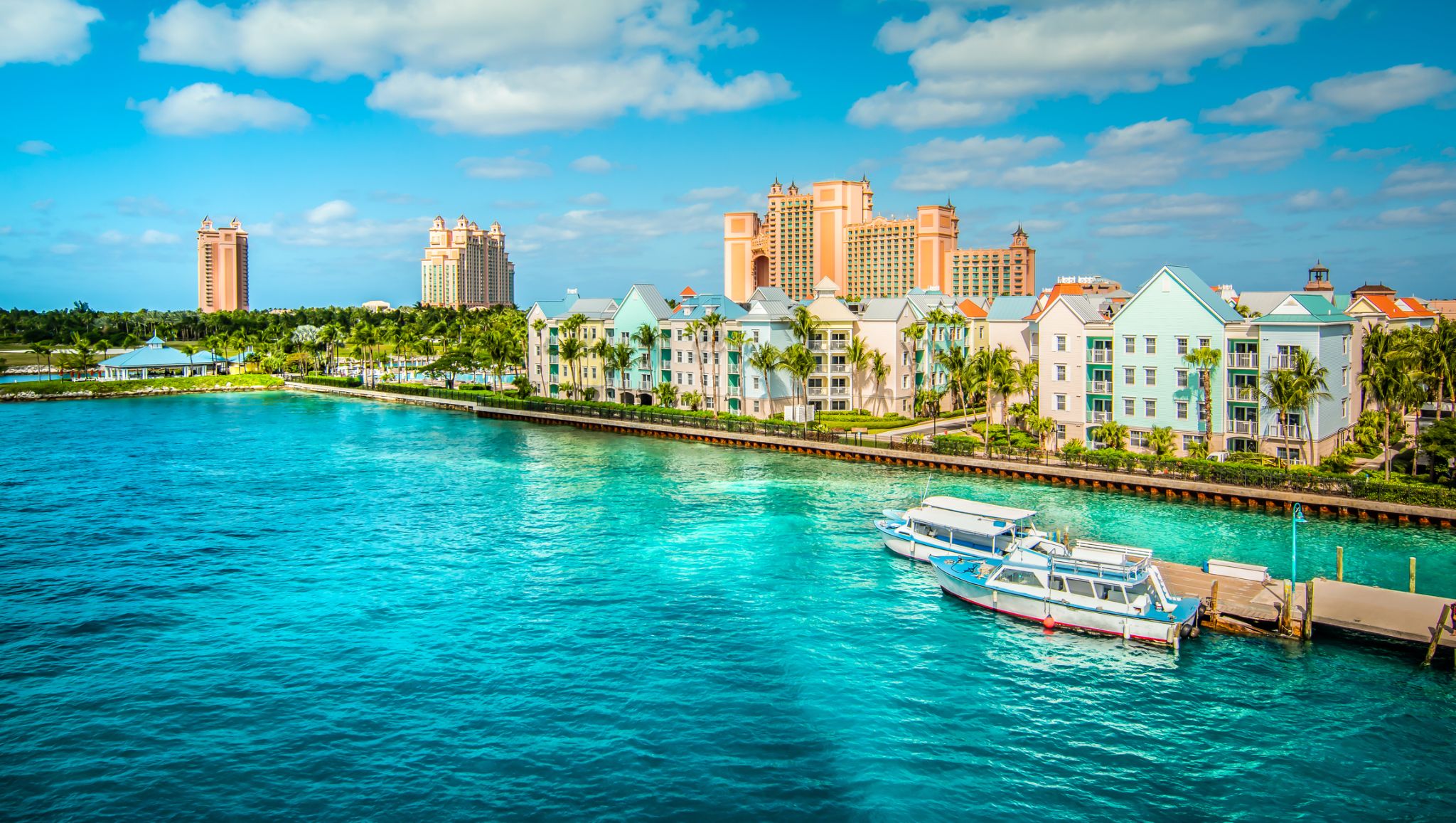 Day 27: 10:00-17:00
Day 27: 10:00-17:00Nassau / Bahamas
a port on the island of New Providence, capital of the Bahamas; population 240,000 (est. 2007).
-
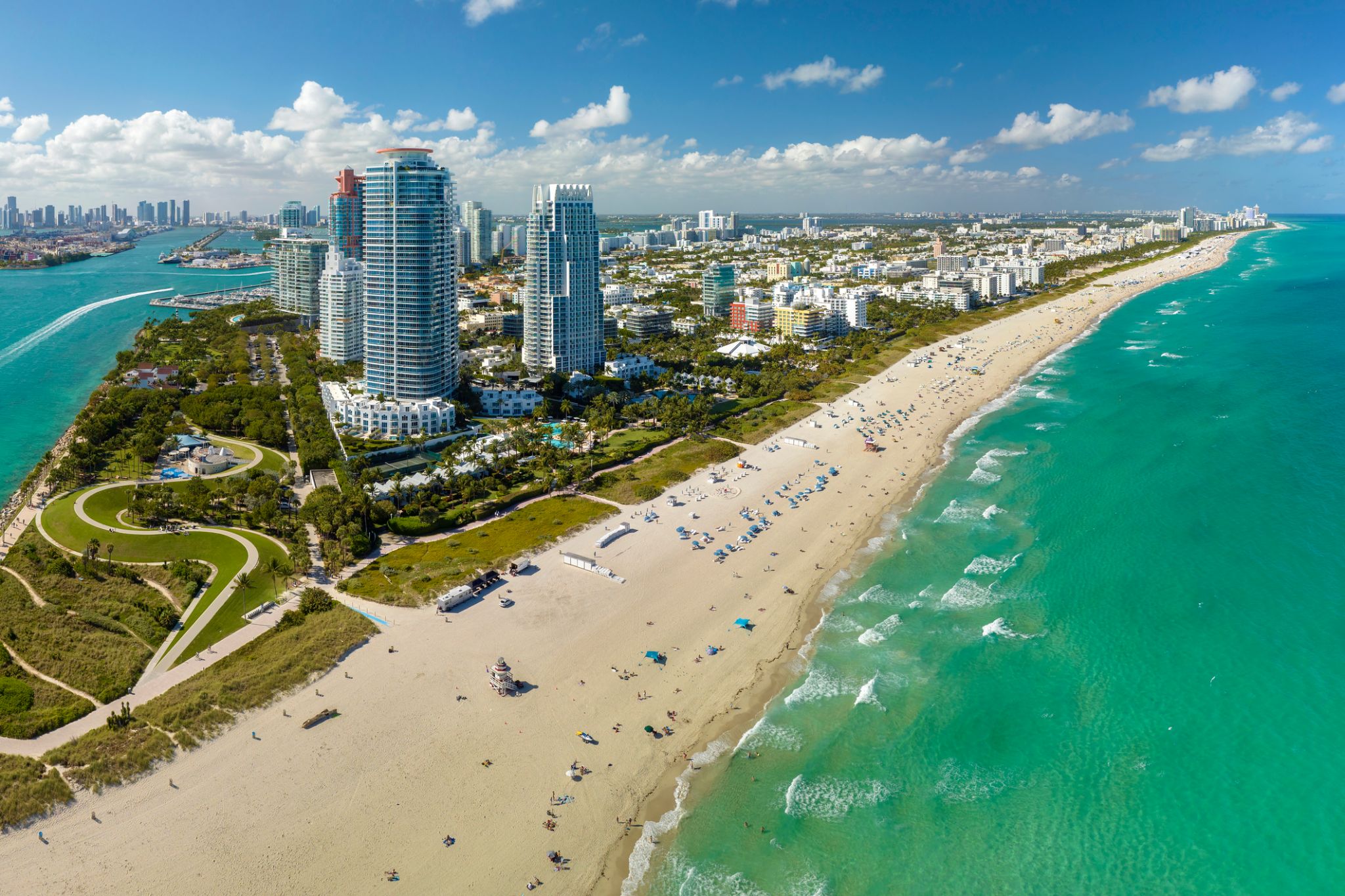 Day 28: 07:00-17:00
Day 28: 07:00-17:00Miami / USA
Miami, officially the City of Miami, is the cultural, economic and financial center of South Florida. Miami is the seat of Miami-Dade County, the most populous county in Florida. The city covers an area of about 56.6 square miles (147 km2), between the Everglades to the west and Biscayne Bay on the east; with a 2017 estimated population of 463,347, Miami is the sixth most densely populated major city in the United States. The Miami metropolitan area is home to 6.1 million people and the seventh-largest metropolitan area in the nation. Miami's metro area is the second-most populous metropolis in the southeastern United States and fourth-largest urban area in the U.S.
Miami is a major center, and a leader in finance, commerce, culture, media, entertainment, the arts, and international trade. The Miami Metropolitan Area is by far the largest urban economy in Florida and the 12th largest in the United States with a GDP of $344.9 billion as of 2017. In 2012, Miami was classified as an "Alpha−" level world city in the World Cities Study Group's inventory. In 2010, Miami ranked seventh in the United States and 33rd among global cities in terms of business activity, human capital, information exchange, cultural experience, and political engagement. In 2008, Forbes magazine ranked Miami "America's Cleanest City", for its year-round good air quality, vast green spaces, clean drinking water, clean streets, and citywide recycling programs. According to a 2009 UBS study of 73 world cities, Miami was ranked as the richest city in the United States, and the world's seventh-richest city in terms of purchasing power. Miami is nicknamed the "Capital of Latin America" and is the largest city with a Cuban-American plurality.
Greater Downtown Miami has one of the largest concentrations of international banks in the United States, and is home to many large national and international companies. The Civic Center is a major center for hospitals, research institutes, medical centers, and biotechnology industries. For more than two decades, the Port of Miami, known as the "Cruise Capital of the World", has been the number one cruise passenger port in the world. It accommodates some of the world's largest cruise ships and operations, and is the busiest port in both passenger traffic and cruise lines. Metropolitan Miami is also a major tourism hub in the southeastern U.S. for international visitors, ranking number two in the country after New York City.
